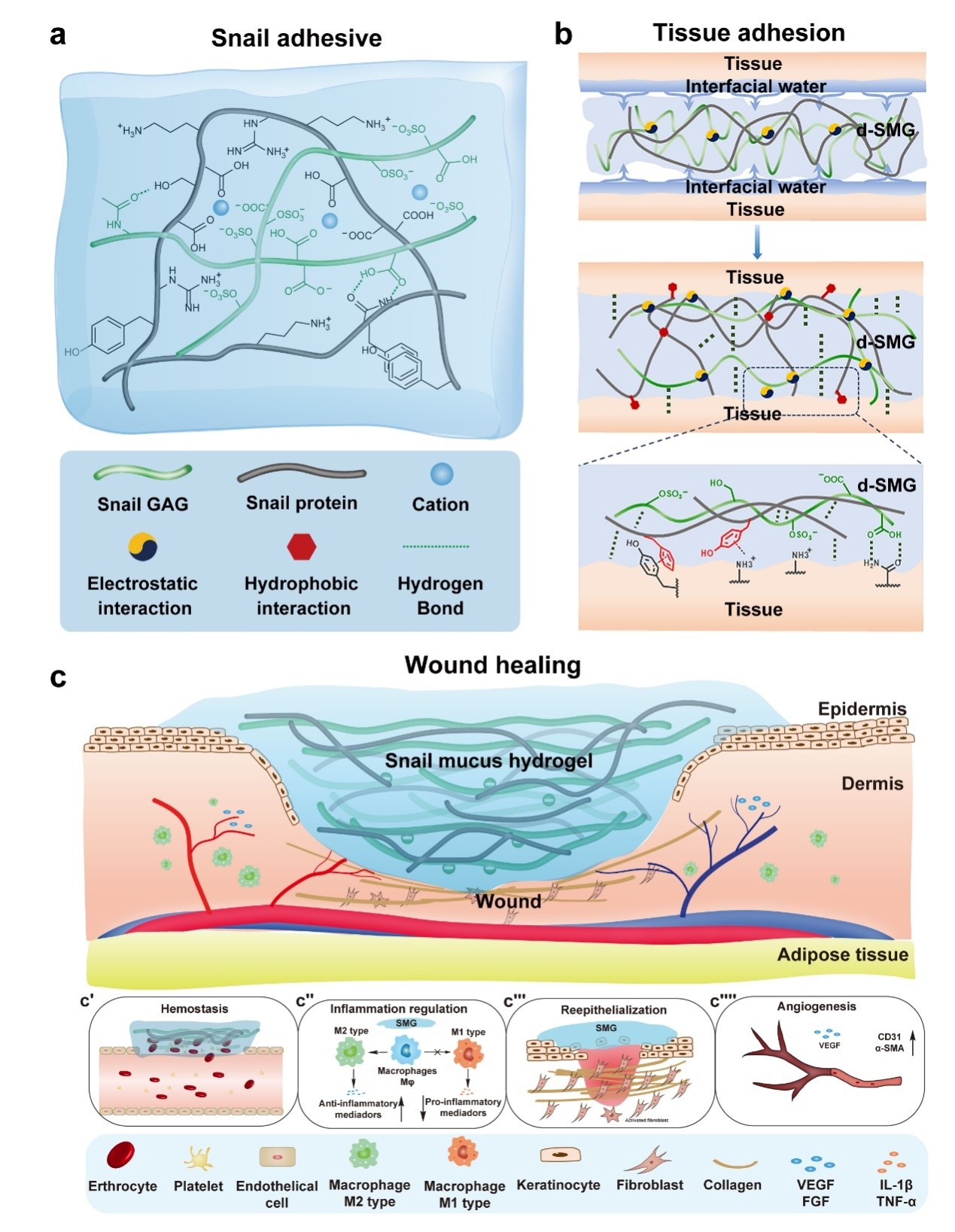
In this study, the researchers found that the natural biomaterial (d-SMG) consists of 30–50% protein and 10-16% sulfated glycosaminoglycan (GAG). The composition of d-SMG is similar to that of ECM which is composed of fibrous proteins and polysaccharides, and provides mechanical support for cell growth and regulates cell behavior.
d-SMG exhibited better adhesion performance in wet tissue than the clinical fibrin glue in both vitro and vivo studies. The natural GAG-protein-based gel provides a moist tissue micro environment with reduced inflammation that is in favor of tissue regeneration.
In vivo study showed that d-SMG promoted skin wound healing in both normal and diabetic rat models. It improved the angiogenesis, granulation tissue neogenesis, collagen deposition, and epidermal regeneration in the wound bed.
For diabetic wounds, the mechanism study showed that both d-SMG dressing and its active ingredient s-GAG promoted the polarization of macrophages towards the anti-inflammatory M2 phenotype by upregulating STAT3 phosphorylation, which may contribute to the transition of wound healing process from inflammation to proliferation, thereby accelerating wound healing.
In addition, d-SMG has a high content of heparin-like GAG, which can also bind the inflammatory cytokines (TNF-α, IL-6, IL-8, and IP-10) with high affinity.
As a result, d-SMG reduced the levels of inflammatory cytokines (TNF-α, IFN-γ and IL-6) in wound tissues possibly by both regulating macrophage polarization and capturing inflammatory cytokines.
The researchers found that a natural glycosaminoglycan-based snail mucus gel can seal skin wounds and promote diabetic wound healing.
These findings provide theoretical and material insights for the development of bioactive dressings and bioengineered scaffolds for wound healing.
In the future, they hope to use the bioadhesive as a novel treatment for DFUs. By targeting the pathogenesis of DFU, the researchers aim to develop more effective drugs or wound dressings for clinical use.

Schematic interpretation of the mechanism of d-SMG in wound healing. a. Formation of double-network snail-mucus hydrogel; b. A possible tissue adhesion mechanism of d-SMG; c. The postulated mechanism of d-SMG in accelerating wound healing, including hemostasis, anti-inflammation, and angiogenesis. (Image by KIB)

86-10-68597521 (day)
86-10-68597289 (night)

52 Sanlihe Rd., Xicheng District,
Beijing, China (100864)

